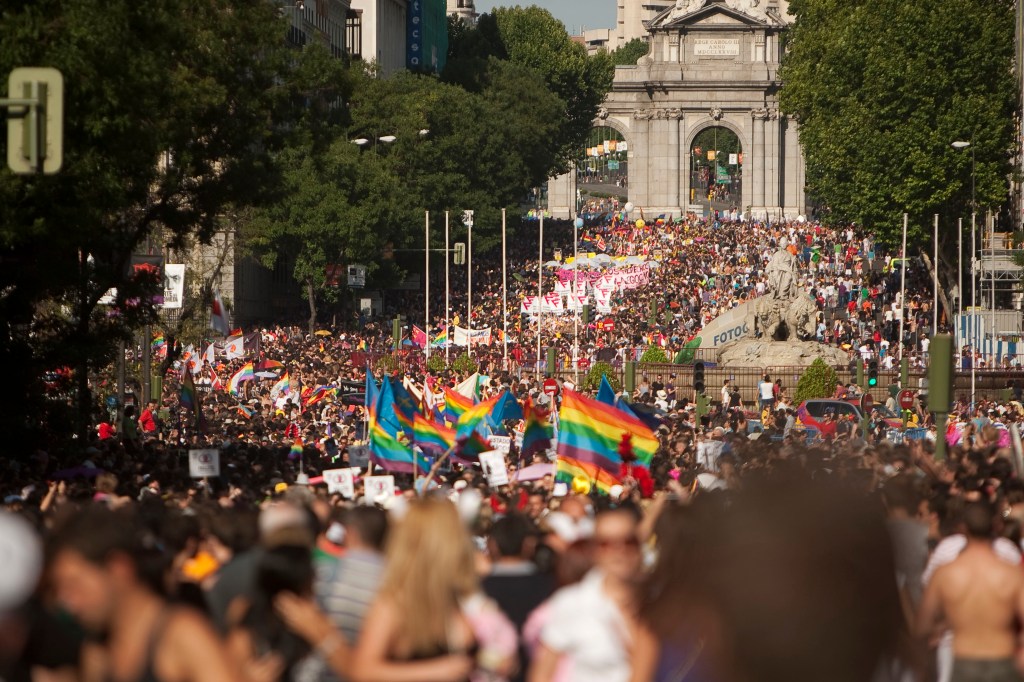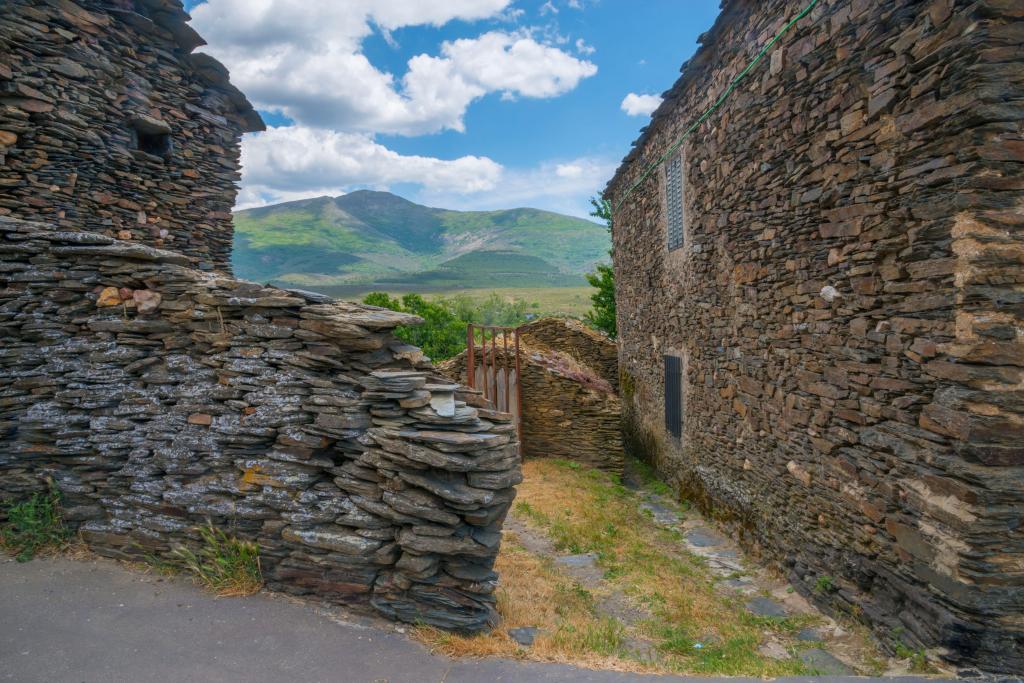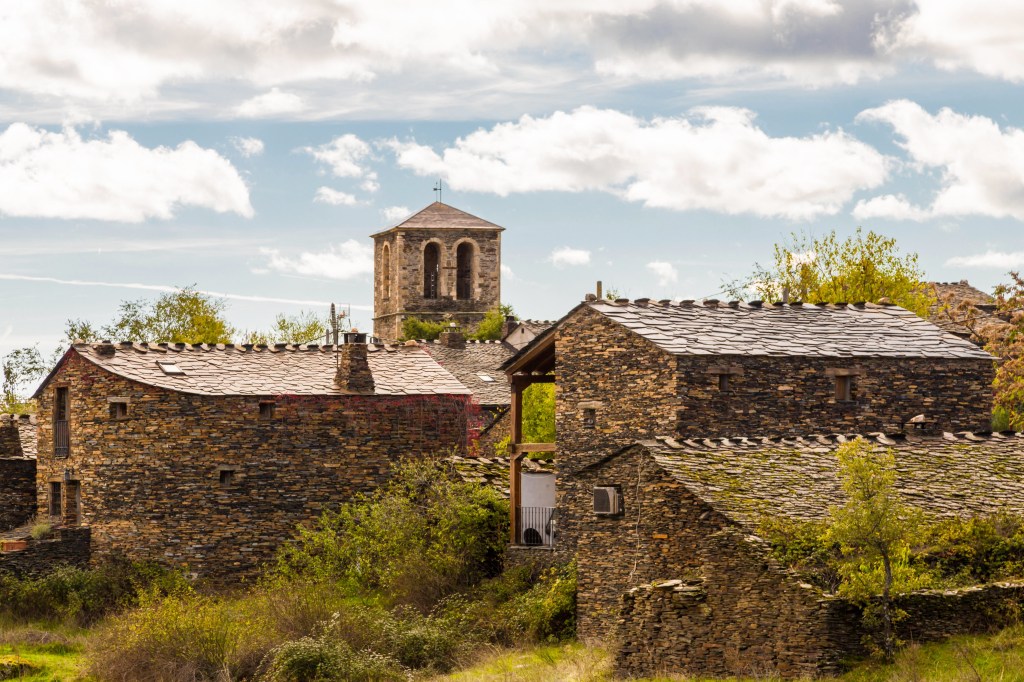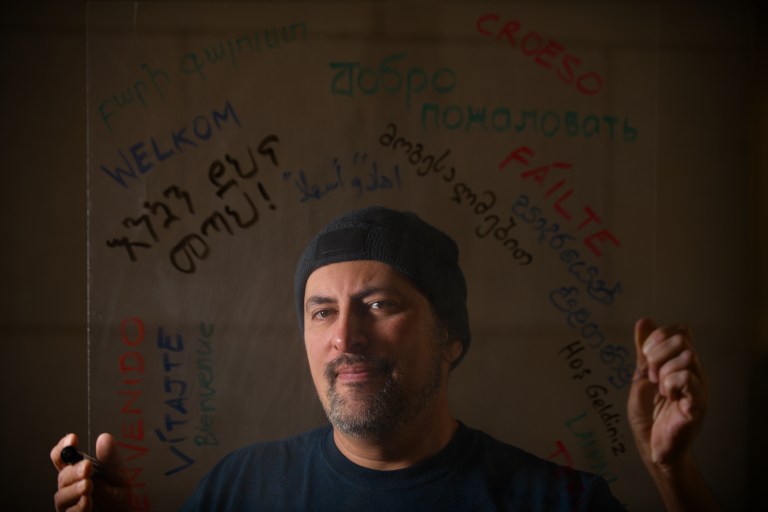In a tiny village in Spain, the streets are lined with black slate buildings, and the majority of residents are in their golden years. It’s perhaps an unlikely destination for celebrating gay marriage — and yet the municipality of Campillo de Ranas, one of the country’s appropriately dubbed “black villages” because of its dark-stoned dwellings, has been a rainbow wedding hot spot for decades.
The town is located in the province of Guadalajara, which, according to The Guardian, has been called “the largest demographic desert in Europe” because it houses only around five people per square kilometer. But on the weekends, Campillo de Ranas’ population swells from 60 inhabitants to 500, mayor Francisco Maroto told El País — owing largely to the once-sleepy village’s nuptial appeal. To date, the town has facilitated over 1,000 ceremonies, many of them same-sex unions.
But it wasn’t always that way. The road to this point was long and winding, much like the route from Madrid to the village itself. And when Campillo de Ranas hosted its inaugural gay ceremony 20 years ago, residents were as fearful as they were excited. “When we celebrated the first same-sex wedding,” recalled Maroto, who’s openly gay himself, “the town hall was full of people from the town because they were afraid that something would happen.”
So how — and why — did this rustic village become a hub for gay celebrations? It started in June 2005, when Spain became the fourth country in the world to legalize gay marriage. Not everyone in the nation was in favor of the change; some political leaders and the Roman Catholic church emphatically opposed it, and the latter endorsed a rally in which even bishops took to the streets.
But ultimately, love won in Spain. “We are not the first, but I am sure we will not be the last,” then-Prime Minister José Luis Rodríguez Zapatero said that year, per The Guardian. “After us will come many countries, driven, ladies and gentlemen, by two unstoppable forces: freedom and equality.”

Eleven years later, author Sergio del Molino first used the term “empty Spain” (or “España vacía”) to describe the radically depopulated rural region of the country. “In Spain, small-scale farm life has altogether disappeared. The smaller the Spanish town, the harder it is to find anyone under 50 in it,” he wrote in his book La España Vacía: Viaje por un País que Nunca Fue (which translates to Empty Spain: Journey Through a Country That Never Was), per Architecture Viva. “Spain’s population is unevenly distributed, concentrated at a few points and practically inexistent in most areas,” he added. “Seen from outer space, the distribution would look like a doughnut with a piece of a bun at the center of the hole.”
When Maroto first arrived in Campillo de Ranas in 1984, the town was “a Celtic hamlet lost to the rest of the world,” he told The Guardian. Only three families lived there permanently at the time — there was no electricity or running water, and laundry was washed in the local stream. The municipality didn’t fare much better at the turn of the century, although tourists increasingly came to witness the area’s unique black architecture.
Today, a growing movement seeks to address España vacía’s depopulation. “There are many problems that policies are not solving but rather deepening, hence the revolt of this ‘empty Spain’ that seeks to revitalize rural areas with opportunities and allow people who want to live there to do so in the same conditions (as in big cities),” Juan Manuel Polentinos Castellanos, from Spain’s Confederation of Rural Development Centers, explained to EuroNews in 2019.

But one opportunity that Campillo de Ranas has consistently provided is social freedom for its gay residents. “I’ve lived here for 31 years and have never had insults or anything remotely like it,” Quique, Maroto’s ex-husband, shared with The Guardian. “You can walk around the village holding hands and no pasa nada.”
When Maroto, who’s been the mayor of Campillo de Ranas for over two decades, took the first step in making the municipality a gay wedding hub, economic revitalization wasn’t the first thing on his mind. Following Spain’s legalization of gay marriage, he primarily wanted to cement his town’s status as a proud supporter of the ruling.
“When several [mayors] announced that they were going to be conscientious objectors and that they would not officiate at these weddings,” he told El País, “I came out saying that I was also a mayor and that of course I was going to marry same-sex couples.”
In November 2005 — just five months after gay marriage was legalized — Campillo de Ranas hosted its first queer wedding. From there, the industry took off and a budding tourism market followed suit. Two years later, Maroto married Quique there, and the town’s story was turned into a 2007 documentary, Campillo Sí, Quiero (which translates to Campillo Yes, I Do). “Campillo shows what’s possible when you have the proper measure of tolerance and respect,” the film’s director, Andrés Rubio, told The New York Times.
Initially, the ceremonies largely catered to gay couples who’d been waiting decades for their chance to legally marry, but that’s changed over the years.
“At first, when the law was passed, I said, jokingly, that Campillo was going to be filled with handsome guys, but what happened was that I married, mainly, people who had been waiting for many years to be able to regularize their situation,” Maroto said to El País. “Today I no longer marry couples who have been together all their lives, but those who, like any other, after a while, decide to take the step.”
Today, the majority of the town’s weddings are heterosexual, though it’s still a popular destination for same-sex weddings as well.
And although an economic boost wasn’t Maroto’s primary goal when he welcomed gay ceremonies, it was a happy by-product of his decision. The town once held only one casa rural, or country accommodation; now it has 19. When Maroto first moved to the village, just six people lived there regularly; today, that number has increased tenfold. Campillo de Ranas’ elementary school reopened after 32 years, and the area now includes five restaurants that provide jobs to locals and hearty fare to wedding guests.

“Weddings served as a window to the world and as an economic pillar,” Maroto said.
Just ask residents in the local bar or craft shop, Taller Tres, who, according to El País, declare their gratitude by repeating the same saying: “If it weren’t for weddings!”
RELATED: Man Invited All of Birmingham, Alabama, to His Wedding in Pakistan After Being Welcomed by City












